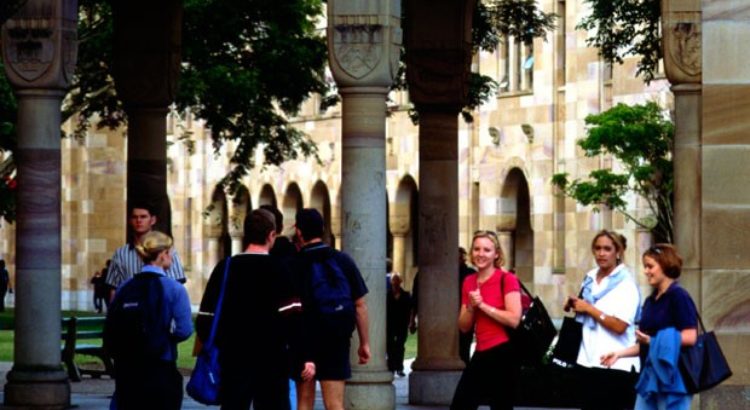By David Fettling
In the YouTube video the young man browses Chinese-language books in a library, practices Chinese calligraphy with careful brushstrokes, introduces himself in Mandarin.
He is 20 years old from southern Sumatra in Indonesia, enrolled at Wuxi Institute of Technology outside Shanghai. He admits learning Mandarin is difficult, but points out it’s now the world’s most-used language, with English relegated to second place.
Other Indonesians studying in China, in other YouTube videos, likewise demonstrate a cultural attraction to the country, emphasising the richness of China’s past, its fast-modernising present, and its hyperpower future.
One Indonesian student remarks how much traditional Chinese architecture remains in Chinese cities: China’s culture is still «murni», or pure, she says.
Another remarks bluntly that China is now «lebih maju», more developed, than Europe, a leader in «teknologi».
Study here, another claims, and you and your country can «bangkit», or awaken, as China has.
Chinese culture, Indonesians note, treats education with great seriousness. One student translates a Chinese expression for «early to sleep, early to rise» into Indonesian, «tidur cepat, bangun cepat» — then adds to it «belajar cepat», quick to study.
Others remark on the «semangat» or spirit, of learning on Chinese campuses, remarking how university libraries are filled with students even on weekends.
Australia has much invested in its ability to attract large numbers of young Asians for tertiary study. The income they bring is increasingly how Australia’s university sector is financed.
Australian institutions want to start drawing more young people from other rising Asian nations, especially India and the ASEAN states: populous, demographically young, and with rapidly expanding middle-classes, they constitute tantalising 21st century markets.
Yet there is increasingly sharp regional competition for where those students choose to study — from China.
Influx of foreign students hits China
South-east Asians and Indians are enrolling in Chinese universities in rapidly increasing numbers.
Roughly 80,000 South-East Asians were studying at Chinese universities in 2016, up 15 per cent from two years before. That includes 14,000 Indonesians (20,000 are in Australia).
Some 18,000 Indians are now at Chinese institutions, more than are in Britain.
China will likely host 500,000 international students before 2020.
One reason for China’s attractiveness is a lower cost of tuition and living — Beijing offers many scholarships, too. But deeper cultural factors are also at work.
Foreign students enthused by China’s uber-modernity
For centuries people across Asia have been intellectually drawn to China and sought to learn from Chinese practices.
China’s 19th century weakness switched emphasis to the West and Japan. But the old pattern was starting to echo again by the mid-20th century when post-colonial Asian nations saw in the newly-proclaimed People’s Republic of China a potential model for their own development.
Indonesian nationalists of that era widely admired the People’s Republic of China as pioneering a new form of Asian modernity. That may be a harbinger of what’s starting — or restarting — now.
Indonesian students in China enthuse about China’s uber-modernity in e-commerce and fast subways; they say studying in China will help them better launch businesses and reduce unemployment back home; and they voicehappiness with the structure and content of their Chinese study programs.
The idea of China as a simultaneously great civilisation, fast-modernising power, and culture conducive to scholarship is attractive to large numbers of young Asians.
International student numbers at Australian universities are currently breaking records. It’s easy to conclude Australia’s position as regional higher education powerhouse is impregnable, that Asian middle classes will always seek their international educations mostly from Western nations.
Such assumptions could soon look as short-sighted as previous ideas of mineral booms lasting forever.
Asian international students in Australia have been voicing increasing dissatisfaction with their educations. Many regret their social isolation: most international students live in a «parallel society» from Australians, often segregated on campuses in international-only dormitories.
Meanwhile, many Chinese institutions, after initially housing international students in separate accommodation, are now moving toward integration of housing and other campus facilities.
Australia has significant advantages in attracting Asia’s best
Asian international students are also increasingly dissatisfied with what they see as Australian universities’ declining quality.
Australian universities have endured four decades of budget cuts with no end in sight, with implications that have not escaped notice on WeChat.
Meanwhile, universities in China have increasingly impressive libraries and laboratories — Indonesians praise Chinese facilities on campuses— and professors with increasingly impressive academic credentials.
Yet Australia has significant comparative advantages in attracting Asia’s best and brightest.
Australia is a liberal democracy in a region that is mostly not: its universities should be naturally superior places for young people who hope to think, write and speak freely, to freely inquire.
A revealing point of irritation among Indonesians experiencing China after their own mostly-free press is China’s internet censorship.
One Indonesian student in China reacted to that aspect of the People’s Republic this way: «Oh my God: seriously?»
Students in China hoping to research «sensitive» topics are often rejected.
China might be seen as more developed because of things like e-commerce, but its e-Stalinism can speedily cancel out the impression.
Our cultural attractiveness is being undermined
And Australia’s stated project of an open, multicultural society, a society that offers international students a chance to fully participate in its workings, either temporarily or permanently as citizens, should have sustained attractiveness — and offer a sustained contrast with more rigid notions in East Asia of who «belongs» and who is an outsider.
Rather than reinforcing those advantages — by revitalising financially-straitened Australian universities, by consolidating its multicultural model — Australia is eroding both.
For years Australia has ignored evidence that its rhetoric of multicultural inclusiveness does not, in practice, extend adequately to Asian international students, many of whom, according to Melbourne University’s Fran Martin, come «full of hopes to learn about and participate in Australian society», yet who often cannot name a single Australian friend when they graduate.
Increased questioning of multiculturalism by government ministers, and tightening of residency and citizenship requirements, is undermining Australia’s cultural attractiveness.
And the persistent downgrading of the place of the university in Australian society — the budget cuts themselves, the commodification and trivialisation of the very concept of university education — inevitably erodes the image of Australia as a place of open, free inquiry, an astute choice of place for people to develop their minds.
Australia has turned its universities into degree factories. Should it be any surprise that China, «the factory of the world», proposes to do that better?
Source of the article: http://www.abc.net.au/news/2018-08-16/australian-unis-biggest-china-threat-competition-chinese-unis/10117508
















 Users Today : 4
Users Today : 4 Total Users : 35460677
Total Users : 35460677 Views Today : 5
Views Today : 5 Total views : 3419787
Total views : 3419787